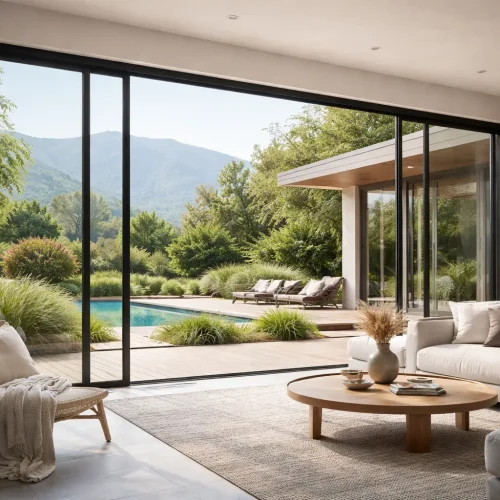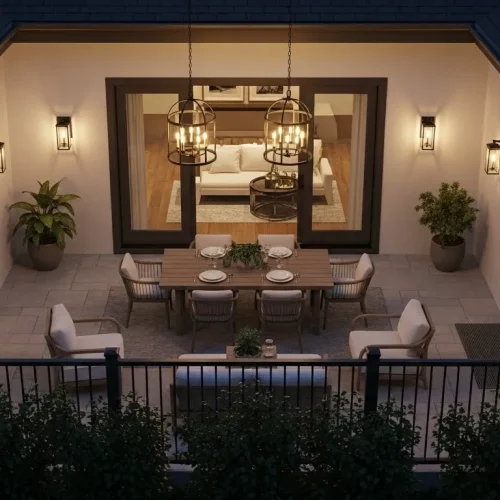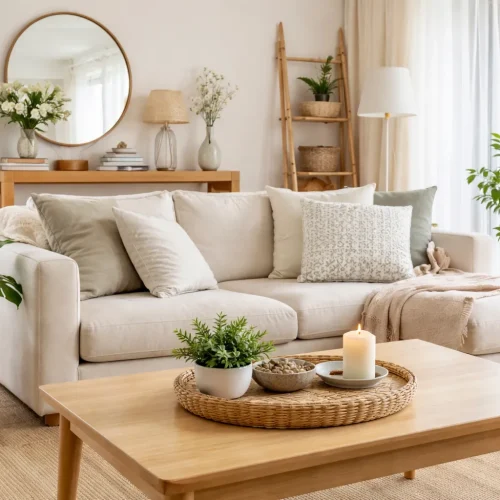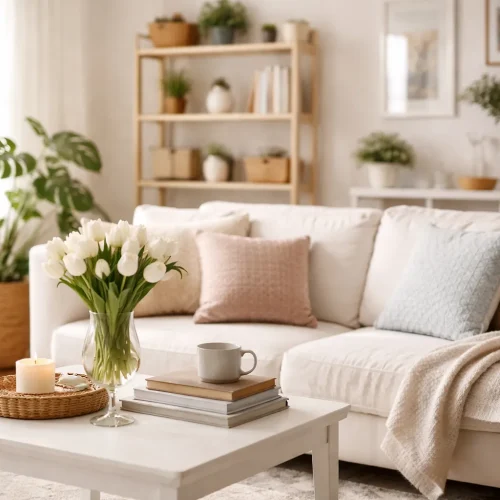
Ever walked into someone’s bedroom and instantly felt calmer? It’s not magic, it’s design. Some rooms just give off a feeling of peace and comfort the moment you step inside. When we started updating our space, the smallest swap, investing in luxury bedside lamps, made the biggest difference. Suddenly, the light felt softer, the evenings felt slower, and the whole room felt more deliberate.
That one detail made us rethink everything else. Turns out, a few small, thoughtful changes can totally shift how your space makes you feel, and it doesn’t take a full makeover or a huge budget.
Light Sets the Tone
If a room feels harsh or cold, lighting is usually the culprit. Most bedrooms are lit like a workspace, bright, overhead bulbs that wash out the space. Relaxing bedrooms, on the other hand, layer their lighting.
Here’s how:
- Skip the ceiling light at night. Use side lighting instead to create pockets of warmth.
- Opt for warm bulbs, not cool ones. Look for a colour temperature of around 2700K.
- Use lamps with fabric or frosted shades. These diffuse the light and help eliminate glare.
If you do nothing else, fixing your lighting can dramatically shift the atmosphere.
Soft Everything: From Texture to Sound
The relaxing bedrooms you love probably have one thing in common, softness. Not just in pillows and throws, but in the general feel of the space. It’s about layers and calm finishes.
Quick wins:
- Rugs: Even on carpet, a rug by the bed adds comfort and a touch of luxury.
- Curtains: Floor-to-ceiling curtains (even on a standard window) soften the room visually and acoustically.
- Bedding: Stick to breathable fabrics and neutral colours, nothing too glossy or loud.
This doesn’t mean your bedroom has to be beige and boring. It just means choosing finishes that look (and feel) calm.
Keep It Calm and Clutter-Free
Visual clutter = mental clutter. Even if you clean regularly, too many random items on display can create low-level stress. That’s why calming bedrooms usually look pared back, even if they’re not minimalist.
Try this:
- Keep your nightstand as clear as possible, just a lamp, a book, and maybe a small tray for essentials.
- Store visible cords, chargers, and gadgets in drawers or cable organisers.
- Use matching containers or baskets to keep things consistent and tidy.
It’s less about hiding your personality and more about creating a space where your brain can rest.
Choose a Colour Palette That Feels Like a Breather
Colours matter. Even a mostly neutral room can feel off if the tones are too cold or mismatched. When aiming for a more relaxing feel, choose a palette with soft, muted hues that flow together.
Good combinations:
- White, sand, and soft sage
- Pale grey with dusty blue accents
- Creams paired with warm wood tones
Avoid jarring contrasts. Instead, look for tones that blend easily and make your eye travel smoothly across the room.
Add Details That Feel Intentional
Once the big things are sorted, focus on finishing touches that bring personality without overwhelming the space. A piece of art, a favourite candle, or a vintage tray on your dresser can bring warmth and meaning, if chosen thoughtfully.
Think:
- One framed photo, not five
- A single signature scent, not a shelf of perfumes
- One standout decor item, not ten
When every item has a purpose, your bedroom naturally feels more serene.
You don’t need to redo your entire room to make it feel like a sanctuary. Focus on a few key details, lighting, softness, colour, and clutter, and you’ll be surprised how quickly the vibe shifts. With a little attention to the right elements, you can turn any bedroom into a space that helps you unwind, sleep better, and actually look forward to turning in at night.
Common Questions
It’s often due to intentional design choices. Elements like soft lighting, clutter-free surfaces, and calming textures create an atmosphere that promotes relaxation the moment you walk in.
Updating your lighting can have the biggest impact. Swapping out harsh overhead bulbs for warm, layered lighting, like bedside lamps with soft shades, instantly creates a cozier, more calming mood.
Choose warm bulbs with a color temperature around 2700K. These provide a soft, inviting glow that helps your room feel more restful.
Add rugs, floor-to-ceiling curtains, and breathable bedding in neutral tones. These elements enhance comfort and reduce both visual and acoustic harshness.
Absolutely. Visual clutter creates mental stress. A clean, streamlined nightstand and tidy storage help the space feel more peaceful and restful.
Use matching baskets or storage boxes and keep cords and gadgets tucked away in drawers or organizers. Consistency is key to a calm-looking space.
Soft, muted tones like white, sand, sage, dusty blue, pale grey, and warm creams create a soothing atmosphere. Avoid high-contrast colors that can feel jarring.
Final Touches, Lasting Calm
Creating a bedroom that feels instantly relaxing isn’t about perfection — it’s about intention. From lighting and textures to scent and simplicity, the smallest tweaks can shift the energy of your space in powerful ways.
You don’t need a full renovation or designer budget. Just start with one corner, one lightbulb, or one plant. Before you know it, your bedroom won’t just look better — it’ll feel like the peaceful escape you’ve always needed.












